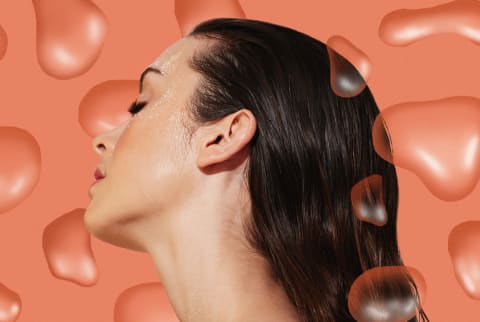Don’t worry; here we gathered the best advice about keeping hair conditioned and hydrated from all our favorite experts: When you switch to sulfate-free shampoos, just note that you will not get the same foamy feeling. (So prepare for a different sensorial experience.) And also, lathering is not an indication of effectiveness. Think about your face washes for a moment: You know that an oil, cream, or balm cleanser can be just as effective at washing your face as a sudsy one. Co-washing is all about your schedule, too: While everyone is going to have a different hair wash routine, you do need to properly shampoo your hair weekly—but between your shampoos, you use your co-wash. “A deep conditioner is an intensive moisturizing and nourishing treatment, also called ‘deep treatment’ and ‘masque.’ These can be broken down into two categories: those meant to provide proteins, and those primarily for moisture,” writes Roberts. “As you may know, healthy hair is a balance between moisture and protein, so we need to use both, depending on the individual needs of our hair. These conditioners are normally quite thick in consistency and should be left on the hair, with heat, for 20 to 30 minutes. Think of deep conditioners as a five-star meal for your hair.” The oil is heated because it is thought to help open the cuticle and let the oil penetrate deeper. “The idea with heat is that it breaks down the bonds and helps coat it better,” says board-certified dermatologist Doris Day, M.D. “I get the theory behind it; there isn’t data to prove it, but it’s been done for a long period of time, and we haven’t seen damage from it.” The treatment in practice varies quite a bit: There isn’t one definitive method that all users agree on, so you’ll end up seeing a lot of different recommendations out there. For our guide, read more about hot oil treatments here. See, over-shampooing or shampooing with too harsh of a product will cause dryness of the scalp and hair. A dry scalp usually feels tight, itchy, and might come with small dry flakes. If you suspect this is your issue, wean yourself off your shampoo schedule. Start by skipping one wash day a week for a few weeks, and then skip another—do this until your scalp feels less irritated and your natural oils are balanced. The idea here is that you trap in water and nutrients from the wash and leave-in with the oil—then you drop it off with the cream to add hold and definition. However, silicones are hydrophobic1, meaning they repel water. They do this by nature, and it is the reason they are theoretically great at reducing frizz (frizz is caused by humidity lifting up the hair’s cuticle2, resulting in a frayed, puffy texture). But when you wash hair, these silicones cling to hair and don’t easily rinse off as they are repelling the water instead of dissolving in it. So if you use a leave-in conditioner with silicones then go to wash it with a shampoo that contains silicones, and then condition with silicones, that routine is likely causing quite a bit of silicone layering and buildup on the scalp and strand. So even if these individual products contain good-for-hair ingredients, those nutrients may not be able to penetrate the shaft because of the occlusive silicone coating. Over time this will dry out your hair.



